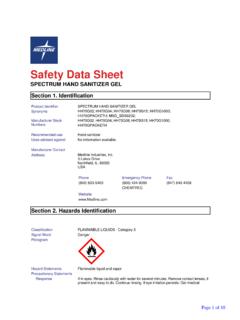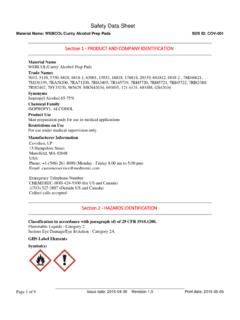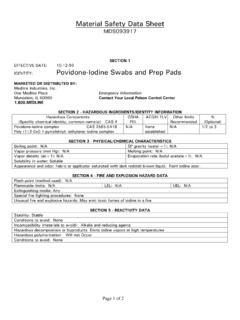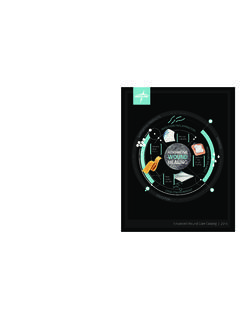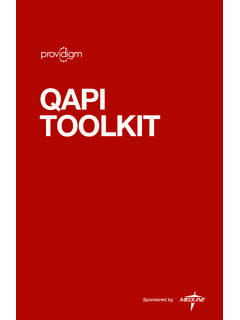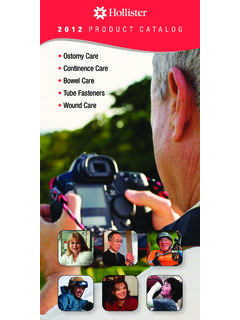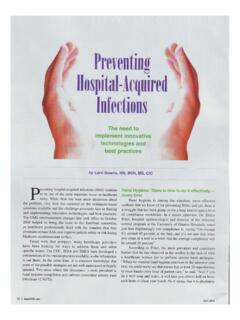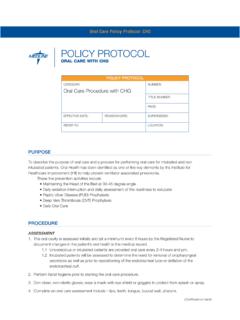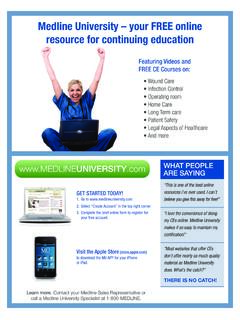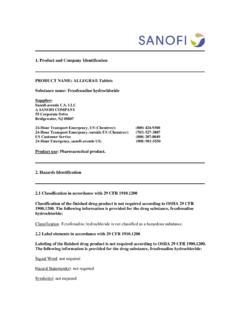Transcription of Safety Data Sheet - Medline
1 Safety data Sheet DRUG BUSTER Section 1. IdentificationProduct IdentifierDRUG BUSTER SynonymsDRUG DISPOSAL SYSTEM ; OTC3200; OTC3210 Manufacture Stock NumbersOTC3200; OTC3210 Recommended useDrug disposal system. Uses advised againstKeep out of reach of children. Follow label directions. Manufacturer ContactAddressMedline Industries, Inc. One Medline Place Mundelein, IL, 60060 USA PhoneEmergency PhoneFax(800) 633-5463(800) 424-9300(847) 643-4436 CHEMTREC 2. Hazards IdentificationClassificationEYE DAMAGE/IRRITATION - Category 2B SENSITIZATION - SKIN - Category 1B SKIN CORROSION/IRRITATION - Category 3 Signal WordWarningPictogram Hazard Statements N/A Precautionary Statements Response If eye irritation persists: Get medical advice/attention.
2 If in eyes: Rinse cautiously with water for several minutes. Remove contact lenses, if present and easy to do. Continue rinsing. If on skin: Wash with plenty of water/ .. Page 1 of 8 Occupational exposure limits, if available, are listed in Section 8. If skin irritation occurs: Get medical advice/attention. If skin irritation or rash occurs: Get medical advice/attention. Specific treatment (see .. on this label) Wash contaminated clothing before reuse. Prevention Avoid breathing dust/fume/gas/mist/ vapors/spray. Contaminated work clothing must not be allowed out of the workplace.
3 Wash ..thoroughly after handling. Wear protective gloves. Storage N/A DisposalDispose of contents/container to .. Ingredients of unknown toxicity 0% Hazards not Otherwise ClassifiedN/A No data Available Section 3. IngredientsCAS Ingredient Name Weight % 7440-44-0 Carbon25 %Section 4. First-Aid Measures General Advice:Take proper precautions to ensure your own health and Safety before attempting rescue and providing first aid. Consult a physician. Show this Safety data Sheet to the doctor in attendance. Move out of dangerous Contact:Flush eyes with large amounts of water, occasionally lifting upper and lower lids, until no evidence of product remains.
4 Remove contact lenses, if present and easy to do. Get medical attention if pain or irritation persists. Skin Contact:Immediately flush skin with plenty of water while removing contaminated clothing and shoes. Do not reuse clothing or shoes until cleaned. If irritation develops or persists, get medical attention. Wash with soap and water. Do not apply oils or ointments unless ordered by the :Remove victim to fresh air. Seek medical attention if discomfort continues. Ingestion:If swallowed, call a physician immediately. Rinse mouth and throat thoroughly with water.
5 Do not induce vomiting unless directed to do so by a physician. Never give anything by mouth to an unconscious person. If vomiting occurs spontaneously, keep head below hips to prevent aspiration of liquid into lungs. Composition designed to induce vomiting if taken InformationPage 2 of 8 Section 5. Fire Fighting MeasuresSuitable Extinguishing MediaIn case of fire, use Dry Chemical, Foam, Carbon Dioxide (CO2), Water spray Unsuitable Extinguishing Product does not support combustion Unusual Fire and Explosion Hazards:Combustion products are toxic Special Fire Fighting Procedures:Self contained breathing apparatus and full protective clothing Fire Fighting Procedures: Cool fire-exposed containers with water spray.
6 Section 6. Accidental Release MeasuresNon-hazardous Small Spill:Should be cleaned up at the time of the spill. Take all necessary precautions and wear any personal protective equipment that is applicable. Dispose of per local and state Large Spill:Should be cleaned up at the time of the spill. May require special treatment, equipment and/or emergency assistance. Dispose of per local and state 7. Handling and StorageHandling Non-hazardous:This product is considered to be an article which does not release or otherwise result in exposure to a hazardous chemical under nomal use Non-hazardous:Store in original package.
7 Discard unused portion. Do not reuse. No special storage conditions 3 of 8 Section 8. Exposure Controls/Personal ProtectionOccupational Exposure LimitsIngredient NameACGIH TLVOSHA PELSTELC arbonN/AN/AN/APersonal Protective EquipmentGoggles, Gloves Engineering Controls:Ventilation: Protection:Respiratory protection may be worn if ventilation does not eliminate symptoms or keeps levels below recommended exposure limits. If exposure limits are exceeded, wear: NIOSH-Approved organic respirator. NIOSH-Approved Supplied Air Respirator (SAR). NIOSH-Approved self-contained breathing apparatus.
8 Do not exceed limits established by the respirator manufacturer. All respiratory protection programs must comply with OSHA 29 CFR and ANSI requirements and must be followed whenever workplace conditions require a respirator's Protection: Protective gloves: RubberEye Protection:Wear chemical Safety goggles while handling this product. Do not wear contact lenses. Wear additional eye protection such as face shield when the possibility exists for eye contact with splashing or spraying liquid, or airborne protective equipment:Eye-wash station. Safety practices:Handle in accordance with good industrial hygiene and Safety practice.
9 Wash thoroughly with soap and water after handling and before eating, drinking, or using tobacco. Safety shower and eye wash should be available close to work 4 of 8 Section 9. Physical and Chemical PropertiesPhysical StateLiquid ColorTransparent gray to light blue OdorCharacteristic of acetic acid Odor Partition coefficient lbs/GalN/APounds per Cubic FootN/AFlash Point> 212 FFP MethodClosed cup Point212 F Boiling Rate< 1 Does not support combustionDecomposition Temperature> 300 Auto-ignition Temperature400 C Vapor 10. Stability and ReactivityStability:StableReactivity:Wil l react to strong oxidizers Incompatibility (Materials to Avoid):Elements of > 12 PH Hazardous Decomposition or Byproducts:Thermal decomposition products: Carbon monoxide and carbon dioxide may form when heated to > 300 F.
10 Hazardous Polymerization May not occur Conditions to 5 of 8 Section 11. Toxicological InformationAcute Toxicity: Eye Contact Irritating to the eye, causing redness and/or stingingAcute Toxicity: Skin Contact May cause temporary stinging sensations Acute Toxicity: Inhalation Vapour may irritate mucous membranes and respiratory tract Acute Toxicity: Ingestion Composition designed to induce vomiting if taken internally Carcinogenicity:Not a carcinogen NTP listed: No IARC listed: NoChronic 12. Ecological InformationToxicity:Is biodegradable in soil and water Persistence and degradability:Will degrade when exposed to environmental conditions, such as heat, cold, light, humidity and compression Bioaccumulative potential:No cumulative potential has been identified.
